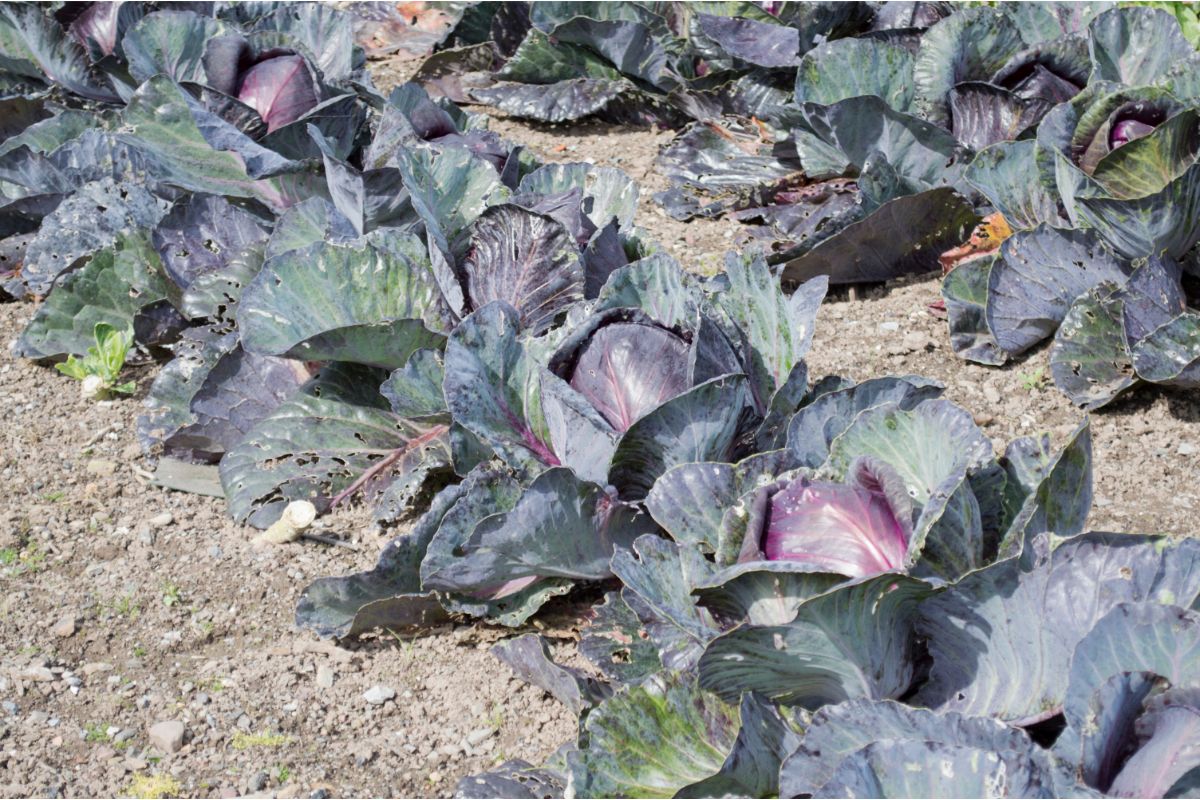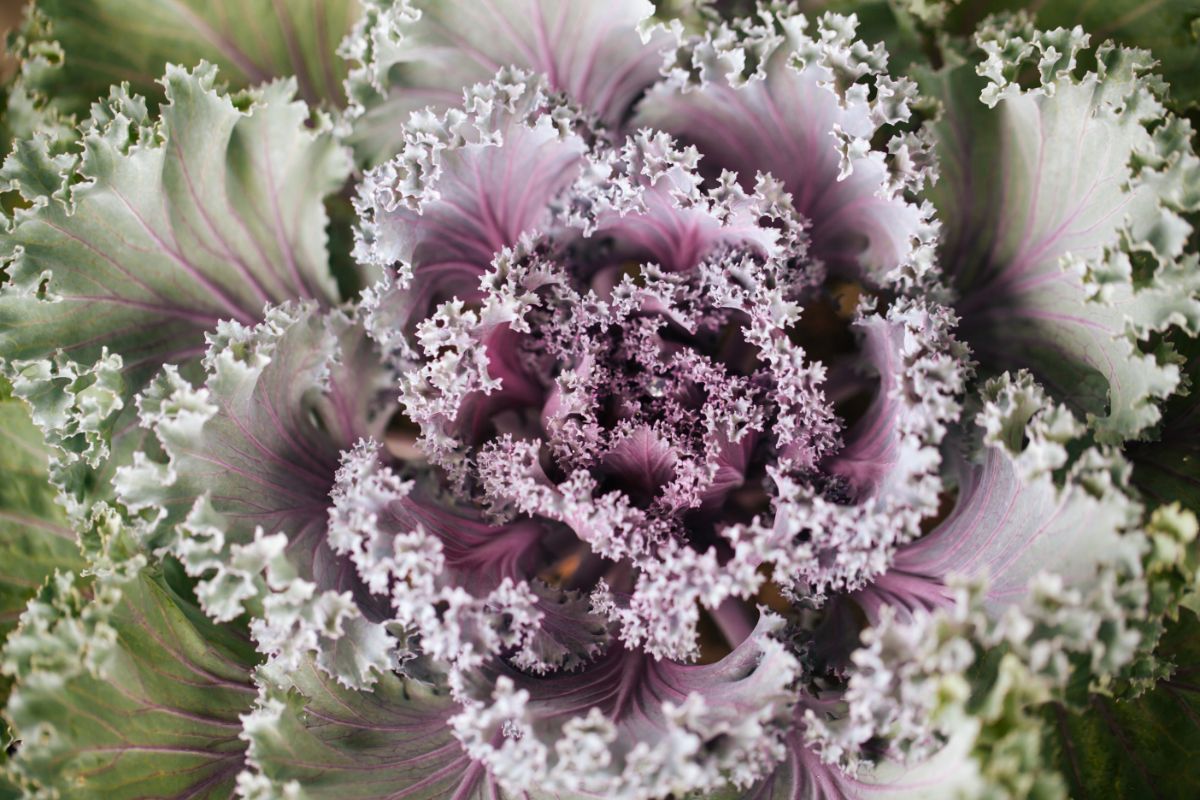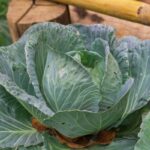Red cabbage is an undeniably attractive addition to any garden, offering vibrant colour, robust texture, and a wealth of health benefits.
But growing this versatile brassica requires more than just basic gardening skills. It needs an understanding of the plant’s unique needs, a strategic approach, and timely interventions.

In this guide, I’ll share clear, step-by-step instructions to help you successfully grow, maintain, and harvest your own red cabbage, enabling you to experience the satisfaction and health benefits that come from homegrown produce.
The Benefits Of Growing Red Cabbage At Home
Red cabbage is a nutritionally dense vegetable that offers a variety of health benefits.
It is packed with vital vitamins such as vitamin C, which boosts the immune system, and vitamin K, which supports bone health.
This vegetable is also a rich source of fibre, aiding digestion and promoting a healthy gut.
The vibrant colour of red cabbage is due to its high anthocyanin content, a type of antioxidant that fights against harmful free radicals in the body, potentially reducing the risk of chronic diseases. In addition, red cabbage provides a good amount of minerals like potassium and manganese, which contribute to overall well-being.
Growing red cabbage at home provides myriad benefits that extend beyond the garden.
Not only do you harvest produce at its freshest, retaining optimal nutritional value, but you also contribute to reducing the environmental impact linked to commercial farming and transportation.
The cost-effectiveness of cultivating your own crop, coupled with the therapeutic qualities of gardening, make it a worthwhile endeavour.
How To Grow Red Cabbages At Home: Step By Step
1. Selecting the Perfect Plot
Red cabbage, like its green counterpart, prefers cool temperatures and moist, well-drained soil.
When choosing a site for your cabbages, consider an area that receives full sun, as these plants need at least six hours of sunlight daily.
The soil pH should ideally be between 6.5 and 7.0, offering a balance between acidity and alkalinity which favours the cabbage’s growth.
Enriching your soil with organic matter or compost before planting improves soil fertility and ensures a better crop yield.
2. Timing and Planting
The best times to sow red cabbage seeds in the UK are during the early spring or late summer. These planting times allow the plants to mature in cooler temperatures, which yields a sweeter, more flavourful product.
In the U.S., red cabbage, a cool-weather crop, can be sown in both spring and fall. For a spring harvest, start seeds indoors 6-8 weeks before the last spring frost, and transplant them outdoors 2-3 weeks before this frost.
For a fall harvest, sow seeds directly into the garden 10-12 weeks before the first expected fall frost. However, the timing can vary based on local climates. Always check local planting guides for precise information.
Start by sowing the seeds in a nursery or seed tray indoors around six weeks before the last frost. Once seedlings develop their second set of true leaves, they’re ready for transplantation.
Prepare holes approximately 45-60cm apart in each direction, and plant the seedlings at the same depth they were growing in the seed trays.
3. Nurturing the Growth
Watering is a crucial aspect of growing red cabbage. A consistent supply of water maintains healthy growth and prevents the heads from splitting.
The soil should be kept moist but not waterlogged, as overwatering can lead to root rot. Mulching around the base of the plants helps to maintain soil moisture and suppress weed growth.
Don’t underestimate the importance of feeding your cabbages, too. A balanced liquid fertiliser applied every two weeks will bolster their growth and improve their nutritional content.
4. Keeping Pests at Bay
Cabbage is vulnerable to a variety of pests, including aphids, caterpillars, and slugs. You can protect your plants with netting or fleece, which deters birds and butterflies.
Encouraging beneficial insects, such as ladybirds and lacewings, into your garden can naturally control aphid populations. For slugs and snails, consider organic methods such as beer traps or copper barriers.
5. Recognising When to Harvest
Red cabbages are typically ready to harvest after three to four months of growth, depending on the specific variety and growing conditions. A fully mature red cabbage is characterised by its firm and compact head.
To harvest, use a sharp knife to cut the head off at the base of the plant, ensuring you leave the outer leaves and root in place. This encourages the growth of cabbage ‘sprouts’ which can be harvested later.
6. Storing Your Harvest
After your successful harvest, you can store red cabbage in a cool, dry place for a couple of weeks. If you intend to store it for longer, consider preserving methods like pickling or fermenting.

Frequently Asked Questions
How Long Does It Take To Grow Red Cabbage?
How Long Does It Take For Red Cabbage To Form A Head?
Red cabbage begins to form heads or ‘hearts’ around 7-9 weeks after transplanting, again depending on variety and growing conditions.
Ensuring a stable water supply and good soil conditions helps in forming solid, tightly packed heads.
What Month Do You Harvest Red Cabbage?
Final Thoughts
Growing red cabbage in your garden can be a highly rewarding process. With these detailed steps, you can foster your own verdant patch of these antioxidant-rich powerhouses, relishing not only their aesthetic appeal but also their numerous health benefits and culinary versatility.
As you tend to your cabbage, you’ll come to understand that the joy of gardening extends far beyond just the tangible rewards.
It’s the process, the patience, and the knowledge that you’ve nurtured a life, from a tiny seed to a vibrant, healthy plant. Indeed, there’s nothing quite like the satisfaction of serving up a dish made with fresh, homegrown red cabbage.
- Can You Grow Bell Peppers Indoors? A Guide For New Gardeners - November 14, 2023
- Composting Basics: Can You Compost Mushrooms? - November 6, 2023
- A Gardener’s Guide To Growing Carrots In Raised Beds - November 1, 2023






